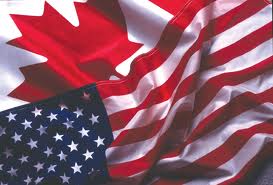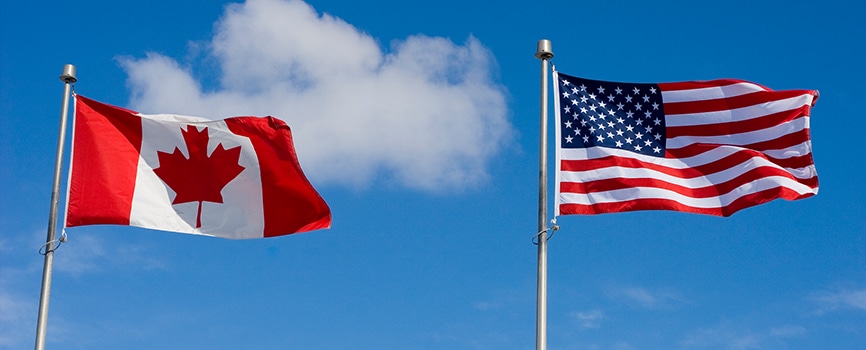The whole world sees the American craft beer industry as both the pioneers of the movement and as the most dominant player. It is the largest, most influential and most boundary-pushing industry. It is the vanguard of craft beer around the world. Well, maybe not.
In my last post I offered up the most recent numbers on Canadian craft beer (you can read that post here). While crunching those numbers I also compared them to the U.S. figures. And the results surprised me.
In short an argument can be made that Canada’s craft beer scene is, on average, as large or even larger than the U.S. Seem hard to believe? Stick with me for a bit.
I should mention I am sticking to conventional definitions of “craft” for simplicity sake here. I know we could spend paragraphs debating what counts as a “craft brewery”. I am not going there today (maybe another day). I am taking the Brewers’ Association at their word for the moment. Just so you know.
Canada Has More Breweries
Exhibit A for the argument is that Canada has more breweries per capita than the U.S. Right now Canada has 1048 breweries (in my database, so give or take a few), which works out to 3.32 breweries per 100,000 adults (defined as 15 years+). In 2019 (the latest data available) the U.S. had 8275 breweries, or 3.11 per 100,000 (also 15+).
This isn’t new. The last time I did these calculations (here) Canada also had more breweries per capita. But the point is worth repeating. We under-estimate the depths and breadth of craft beer in Canada.
I think we see these results because there is a great deal of divergence from state to state. We all know about the meccas of beer like Oregon, Colorado, Vermont and California. But for every bursting-at-the-seams region there is a Mississippi, Alabama and Louisiana. For example Mississippi has only 14 breweries (0.7 per capita). That moves the average. Canada also has a range, but it is without the extremes.
Even then, I think there is some propensity to over-state the strength of the U.S. industry. A case in point: California has 907 breweries. That sounds like a lot, but we need to consider its population (almost 40 million) is larger than Canada’s (37 million).
If we rank the 62 states/provinces/territories, Canadian provinces fare quite well. The table below shows where the provinces and select states rank (U.S. figures are per 21+ population; Canadian per 15+ population).
| Rank | Province/State | Breweries per 100,000 |
| 1 | Vermont | 14.2 |
| 2 | Maine | 12.7 |
| 3 | Montana | 11.5 |
| 4 | Colorado | 10.0 |
| 5 | Wyoming | 9.8 |
| 6 | Oregon | 9.7 |
| 9 | New Brunswick | 8.6 |
| 11 | Nova Scotia | 7.2 |
| 13 | Territories | 6.2 |
| 14 | P.E.I. | 6.0 |
| 19 | British Columbia | 4.8 |
| 24 | Newfoundland | 4.2 |
| 33 | Massachusetts | 3.3 |
| 34 | Quebec | 3.2 |
| 35 | Alberta | 3.2 |
| 36 | California | 3.1 |
| 40 | New York | 2.9 |
| 42 | Ontario | 2.5 |
| 53 | Saskatchewan | 2.0 |
| 57 | Texas | 1.7 |
| 59 | Manitoba | 1.5 |
| 62 | Mississippi | 0.7 |
Most Canadian provinces are clustered in the middle of the pack, which seems about right. They are behind the real leaders in craft beer, but are around the same level as many highly regarded U.S. states.
But What About Size?
An argument many make, including myself in the past, is that while Canada may have similar numbers of breweries our breweries are much smaller than American breweries. This is true. But I have come to believe it is also beside the point. Canada’s population is one-tenth the size of the U.S., so it would make sense that our breweries would be, on average, one-tenth the size of their breweries.
A more important measure is what percentage of the beer market does craft beer hold. In the U.S. the Brewers’ Association reports that in 2019, craft beer captured 13.6% of beer sales by volume. They indicate about 19% imports and the remaining two-thirds belonging to the corporate brewers.
National figures are not available in Canada – Beer Canada does not break down domestic sales. It does report a similar level for imports – 16%. The question is what portion of the 84% is taken up by independent craft breweries.
We can make some extrapolations from provincial data. Reports suggest craft in B.C. is about 25% of the market. In Ontario is it plausibly 15%. I would expect similar numbers in Quebec, given the structure of their market and nationalist sentiments that would increase support for local breweries. Alberta is about 10% and the rest of the provinces are in single digits.

Add it all together and we can reasonably estimate that craft beer makes up about 15% of the Canadian market. So, slightly more than American craft breweries.
I recognize many American craft breweries export around the world, and most Canadian breweries do not. It is unclear whether the Brewers’ Association figures include production for export. If not, then this would increase American production figures, likely making it roughly equivalent to Canadian numbers.
Conclusion
The lack of reliable Canadian data makes it hard to be too vociferous in concluding that the Canadian craft beer industry is larger than the U.S. But I think the numbers we do have show that, at minimum, Canada’s craft beer scene is just as large as the Americans. At least when examined on a population basis.
You might be thinking this is largely an academic exercise. Common sense tells us that the U.S. has a much larger industry in real terms. They have more and larger breweries producing more beer than we do. The size allows for both economics of scale and greater innovation. The U.S. leadership in craft comes from the sheer size of its industry.
Maybe. To a certain extent that is true. But it might also be about who talks a bigger game. The U.S.,in general, is very good a self-promotion. And their companies (breweries included) are quite aggressive on a global scale. That, by itself, doesn’t make the beer taste better, nor does it make their industry more important. Canada’s breweries might be lower key and more domestically focussed, but I content they are every bit as innovative and attentive to quality as their compatriots to the south.
One out of every seven beer consumed in the U.S. is craft. One in every seven beer sold in Canada is craft. You tell me which country has the most significant craft beer industry?



October 10, 2020 at 1:09 PM
Ever since our craft beer industry has flourished in Regina, Sk., I’ve been proud to support them. Our Regina beers are as good or better than any beer, from anywhere!